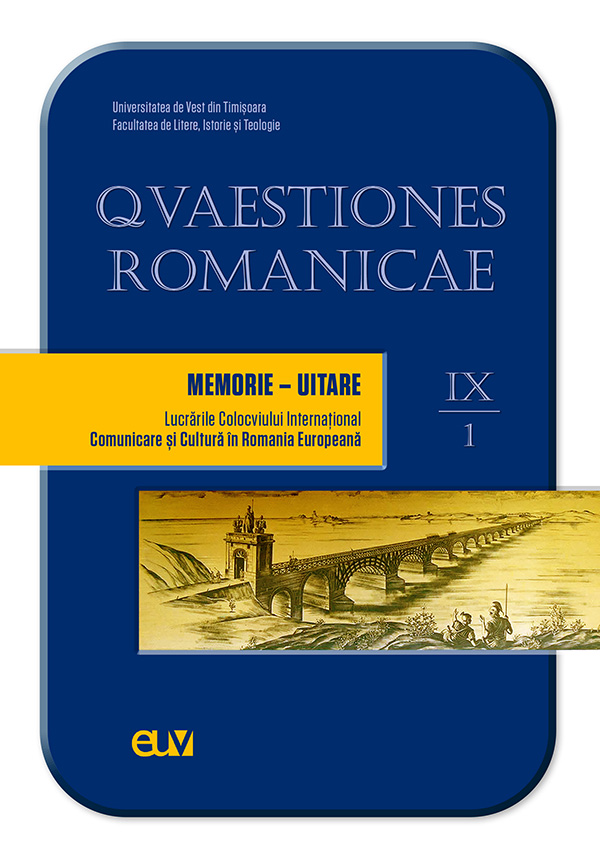Verga e Rebreanu, “voci” della memoria collettiva delle sommosse contadine
Abstract: (Verga e Rebreanu, Voices of the Collective Memory of Peasant Uprisings). History books mention terrible moments that marked people’s existence. History, however, records precise facts and details; it does not spur emotions and cannot fix the events into the collective memory of feelings that only literature is able to do. Literature also has the function to universalize individual experiences, to award them the status of example and to make them significant for humanity as a whole. Starting from this assumption, our research will follow the image of the uprising as reflected in two exceptional narratives: the short-story “Libertà” (“Freedom”) by the Sicilian writer Giovanni Verga and the novel “Răscoala” (“The Uprising”) by the Romanian prose-writer Liviu Rebreanu. Both texts are inspired of events that really took place, namely the massacre of Bronte in 1860 and the peasant rebellion of 1907. However, both texts focus on purely fictional stories, though perfectly fitting into the reality of the events they are inspired by. We will therefore comment upon the resemblances and the differences that characterize the modalities in which the two authors understand the causes of the movements, the accumulation of tension within the mass of the peasants, the violent and insane manifestation of the wild crowd, and the terrible repression implemented by the state. We will insist upon the elements that give particular depth to the narration and underline its profound brutality, characteristic for naturalism / “verismo”. In conclusion, we will note that Verga’s and Rebreanu’s expressive ability not only makes plausible their plots, but fixes them indelibly in the memory of posterity, more alive and more real than history itself.
Keywords: Verga, Rebreanu, freedom, rebellion, peasant uprising.
Riassunto: Nei libri di storia si ritrovano momenti terribili che hanno segnato l’esistenza dei popoli. Ma la storia registra fatti e dettagli precisi, non racconta emozioni e non può fermare gli eventi nella memoria collettiva degli affetti, che è invece compito della letteratura. Inoltre, sempre compito della letteratura è universalizzare esperienze puntuali, dare loro valore di esempio e renderle significative per l’intera umanità. Partendo da questo presupposto, seguiremo nella nostra relazione l’immagine della sommossa riflessa in due prose eccezionali: la novella “Libertà” dell’autore siciliano Giovanni Verga e il romanzo “Răscoala” (“La rivolta”) del prosatore rumeno Liviu Rebreanu. Entrambi i testi sono ispirati ad avvenimenti realmente accaduti, rispettivamente la strage di Bronte del 1860 e la rivolta contadina del 1907. Ciò nonostante, entrambi i testi sono incentrati su storie di pura finzione, anche se perfettamente inquadrabili nella realtà dell’evento dal quale traggono origine. Commenteremo dunque le somiglianze e le differenze che caratterizzano le modalità in cui i due autori colgono le cause dei moti, l’accumulo della tensione nella massa dei contadini, la manifestazione violenta e insensata della folla scatenata e la tremenda repressione messa in atto dallo Stato. Insisteremo inoltre sugli elementi naturalisti/veristi che danno particolare profondità alla narrazione e ne evidenziano la viscerale brutalità. In conclusione, osserveremo che la capacità espressiva di Verga e Rebreanu non solo rende plausibili i loro racconti ma li fissa in maniera indelebile nella memoria dei posteri, più vivi e veri della storia stessa.
Parole chiave: Verga, Rebreanu, libertà, rivolta, sommossa contadina.


